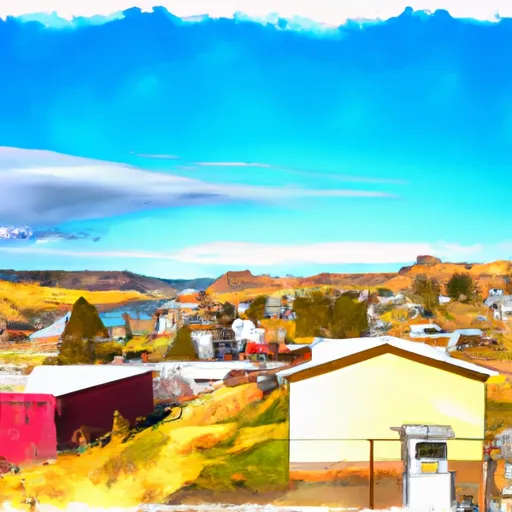-
 Snoflo Premium
Snoflo Premium
Get unlimited access to all our content
With no Ad interruptions! - Start Your Free Trial Login with existing account
Whitlash
Eden Index
Climate
6.8
•
Recreation
•
Community
•
Safeguard
2.7/10

Whitlash, Montana is a small unincorporated community located in Liberty County. The town experiences a continental climate with warm summers and cold winters. Summers are generally pleasant with temperatures averaging in the high 70s to low 80s Fahrenheit, while winters can be bitterly cold, often dropping below freezing. The area receives a moderate amount of precipitation, with the majority falling during the summer months.
Hydrologically, Whitlash is situated near the Marias River, a tributary of the Missouri River. This offers residents and visitors opportunities for fishing, boating, and other water-based activities. The Marias River is known for its diverse fish population, including walleye, northern pike, and catfish.
Outdoor recreation enthusiasts will find plenty of opportunities in the surrounding area. Whitlash is surrounded by vast open landscapes, making it an ideal destination for hiking and wildlife spotting. The nearby Little Rocky Mountains provide opportunities for camping, hunting, and horseback riding. In the winter, the area offers opportunities for snowmobiling and cross-country skiing.
Overall, Whitlash, Montana offers a diverse range of outdoor recreation opportunities in a picturesque rural setting, catering to nature lovers and outdoor enthusiasts alike.
What is the Eden Index?
The Snoflo Eden Index serves as a comprehensive rating system for regions, evaluating their desirability through a holistic assessment of climate health, outdoor recreation opportunities, and natural disaster risk, acknowledging the profound impact of these factors on livability and well-being.
Climate Health Indicator (CHI): 6.8
Whitlash receives approximately
389mm of rain per year,
with humidity levels near 69%
and air temperatures averaging around
6°C.
Whitlash has a plant hardyness factor of
4, meaning
plants and agriculture in this region thrive during a short period during spring and early summer. Most
plants will die off during the colder winter months.
By considering the ideal temperature range, reliable water supplies, clean air, and stable seasonal rain or snowpacks, the Climate Health Indicator (CHI) underscores the significance of a healthy climate as the foundation for quality living.
A healthy climate is paramount for ensuring a high quality of life and livability in a region, fostering both physical well-being and environmental harmony. This can be characterized by ideal temperatures, reliable access to water supplies, clean air, and consistent seasonal rain or snowpacks.
Weather Forecast
Streamflow Conditions
Milk
Area Rivers
Milk
Snowpack Depths
Milk
Reservoir Storage Capacity
Milk
Groundwater Levels
Recreational Opportunity Index (ROI):
The Recreational Opportunity Index (ROI) recognizes the value of outdoor recreational options, such as parks, hiking trails, camping sites, and fishing spots, while acknowledging that climate plays a pivotal role in ensuring the comfort and consistency of these experiences.
Access to outdoor recreational opportunities, encompassing activities such as parks, hiking, camping, and fishing, is crucial for overall well-being, and the climate plays a pivotal role in enabling and enhancing these experiences, ensuring that individuals can engage in nature-based activities comfortably and consistently.
Camping Areas
| Campground | Campsites | Reservations | Toilets | Showers | Elevation |
|---|---|---|---|---|---|
| Chester City Park | None | 3,129 ft |
Catastrophe Safeguard Index (CSI):
The Catastrophe Safeguard Index (CSI) recognizes that natural disaster risk, encompassing floods, fires, hurricanes, and tornadoes, can drastically affect safety and the overall appeal of an area.
The level of natural disaster risk in a region significantly affects safety and the overall livability, with climate change amplifying these risks by potentially increasing the frequency and intensity of events like floods, fires, hurricanes, and tornadoes, thereby posing substantial challenges to community resilience and well-being.
Community Resilience Indicator (CRI):
The Community Resilience Indicator (CRI) recognizes that education, healthcare, and socioeconomics are crucial to the well-being of a region. The CRI acknowledges the profound impact of these elements on residents' overall quality of life. By evaluating educational resources, healthcare accessibility, and economic inclusivity, the index captures the essential aspects that contribute to a thriving community, fostering resident satisfaction, equity, and social cohesion.

